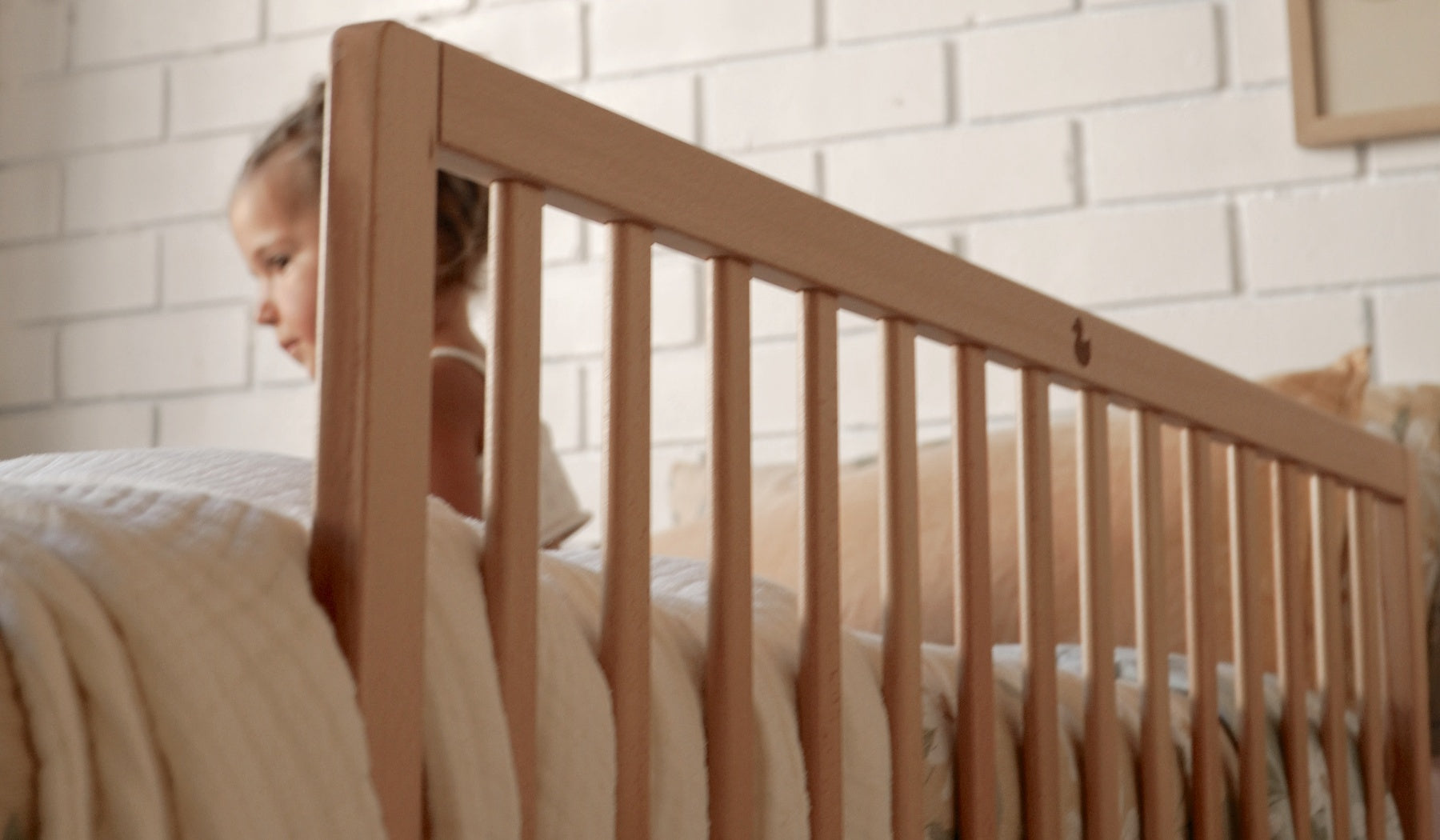
When Do Babies Roll Over? A Complete Safety Guide for Kiwi Parents
You place your baby on the bed and step into the kitchen for a much-needed coffee. When you return, a thought crosses your mind—what if your wee one suddenly rolled over? Rolling is one of the first big milestones, a sign your baby is getting stronger and ready to explore.
In this guide for Kiwi parents, we'll cover key developmental stages, expert tummy time advice, and the crucial safety steps you need to take for safe sleep in NZ—including why a quality baby bed rail is a nursery essential.
In This Article:
- At What Age Do Babies Roll Over in NZ?
- Signs Your Baby Will Roll Over Soon
- The Different Types of Rolling Skills
- How to Help Your Baby Learn to Roll
- Baby Rolling & Safe Sleep: Why You Need a Bed Rail in NZ
- Beyond Rolling: What's the Next Milestone?
- Key Takeaway for Kiwi Families
At What Age Do Babies Roll Over in NZ?
Rolling over is often the very first independent move babies make. Most babies in New Zealand start rolling between 4 and 6 months old.
As local experts like Plunket point out, every pēpi (baby) develops at their own pace. Some might show signs of rolling at four months, while others take a bit longer. By six months, most have mastered rolling both from tummy to back and back to tummy.
If your baby hasn’t rolled by seven months, it’s not automatically a cause for concern. However, it's a good idea to mention this key NZ developmental milestone at your next visit with your Plunket nurse or GP for reassurance.
Signs Your Baby Will Roll Over Soon
So, how can you tell your baby is getting ready to roll? You might notice these signs during tummy time:
- Pushing up on their arms, straightening their elbows.
- Rocking from side to side, shifting weight between arms.
- Turning their head to follow toys or the sound of your voice.
-
Reaching for things placed just beside them.
These movements are building your baby’s core, neck, and arm strength—all essential for the big roll.
The Different Types of Rolling Skills
Babies usually learn to roll in two stages:
- Rolling from Tummy to Back: This move often comes first as it requires less coordination. During tummy time, a baby might push up and simply tip themselves over.
- Rolling from Back to Tummy: This is a bit trickier, requiring more core strength. Babies learn to use their legs and tummy muscles to twist their body over, usually by 6–7 months.
How to Help Your Baby Learn to Roll
While it looks simple, rolling is a complex skill. Here’s how you can encourage your little one, with some Plunket tummy time advice in mind:
- Plenty of Tummy Time: Tummy time is vital. Place your baby on a firm, safe surface like a play mat. Use toys or a baby-safe mirror to keep them engaged. For more ideas, check out these great tips from KidsHealth NZ on Tummy Time.
- Try Side-Lying Play: This helps build core muscles and gets them used to the halfway point of a roll.
- Gently Show Them How: Help your baby understand the motion by gently guiding them through a roll.
- Encourage Reaching: Hold a favourite toy just out of reach. As they shift their weight to reach, they are building the exact muscles needed.

Baby Rolling & Safe Sleep: Why You Need a Bed Rail in NZ
The start of rolling is the start of real mobility. This brings a new set of critical baby rolling safety tips:
-
Never leave your baby unattended on an elevated surface like a bed, couch, or change table.
-
Once your baby shows signs of trying to roll, you must stop swaddling. They need their arms free to ensure safe sleep for your baby.
This increased mobility is why many Kiwi parents invest in extra safety measures. One of the most practical and important is a bed rail. Once your little one can roll, they can travel across a bed with surprising speed.
This is where a high-quality bed rail for beds becomes non-negotiable for peace of mind. A secure barrier prevents dangerous falls, ensuring your baby stays safe during naps and overnight sleep.
👉 Explore our range of safety-certified baby bed rails designed for Kiwi homes.
Beyond Rolling: What's the Next Milestone?
Rolling is just the beginning! It paves the way for even bigger milestones:
- Sitting without support (around 6–9 months)
- Crawling (around 9 months)
- Pulling up to stand and "cruising" (9–12 months)
-
First steps (often around 12 months)
If you ever have concerns about your baby’s development, have a chat with your GP, Plunket nurse, or another Well Child Tamariki Ora provider.
Key Takeaway for Kiwi Families
Rolling is an exciting milestone, typically happening between 4-6 months. You can encourage it with plenty of tummy time and play.
But as soon as your baby is on the move, home safety becomes paramount. By following safe sleep advice and installing essential gear, like a reliable bed rail from a trusted NZ supplier, you can create a safe environment for your baby to grow and explore—giving the whole family peace of mind.


